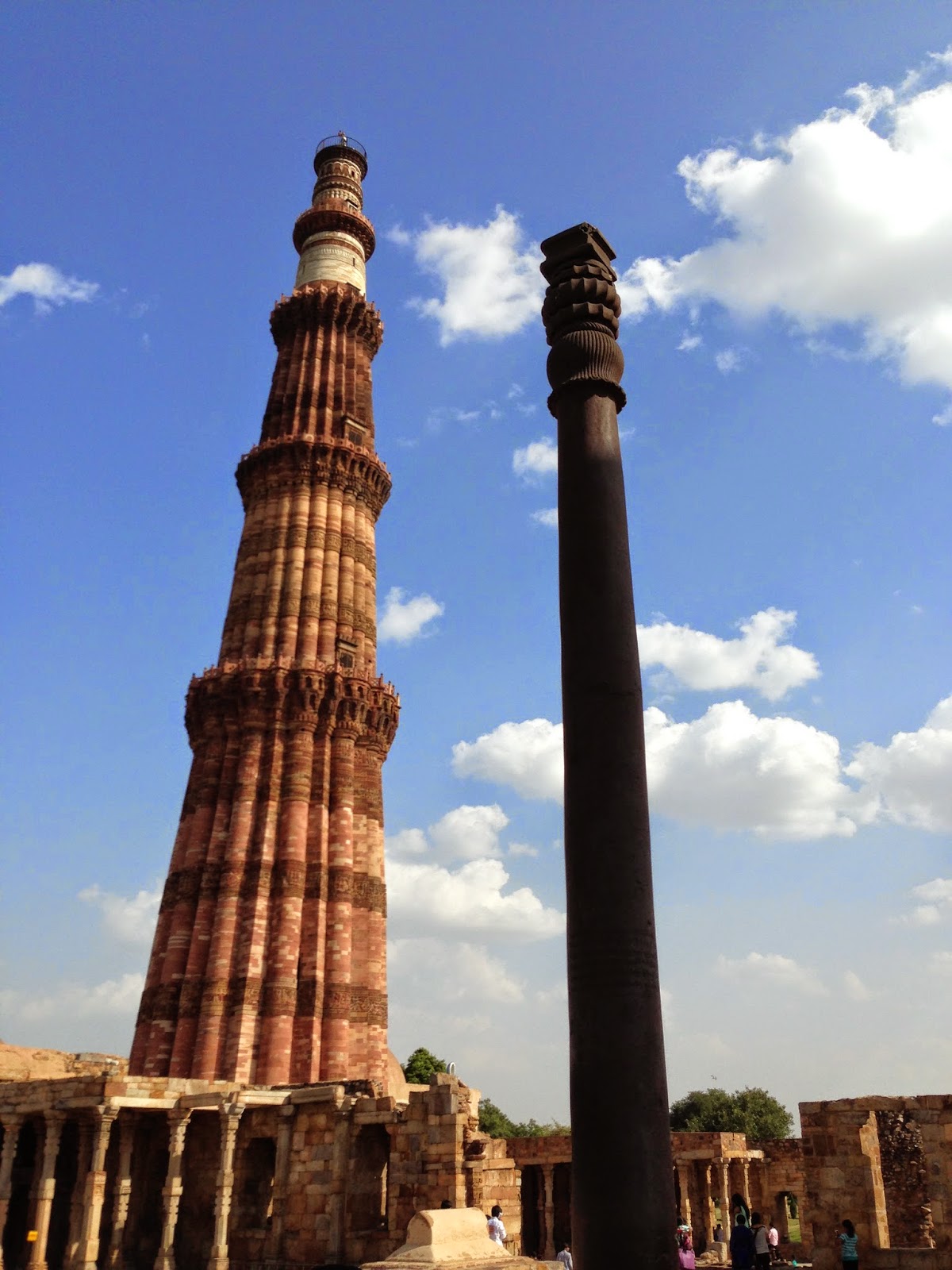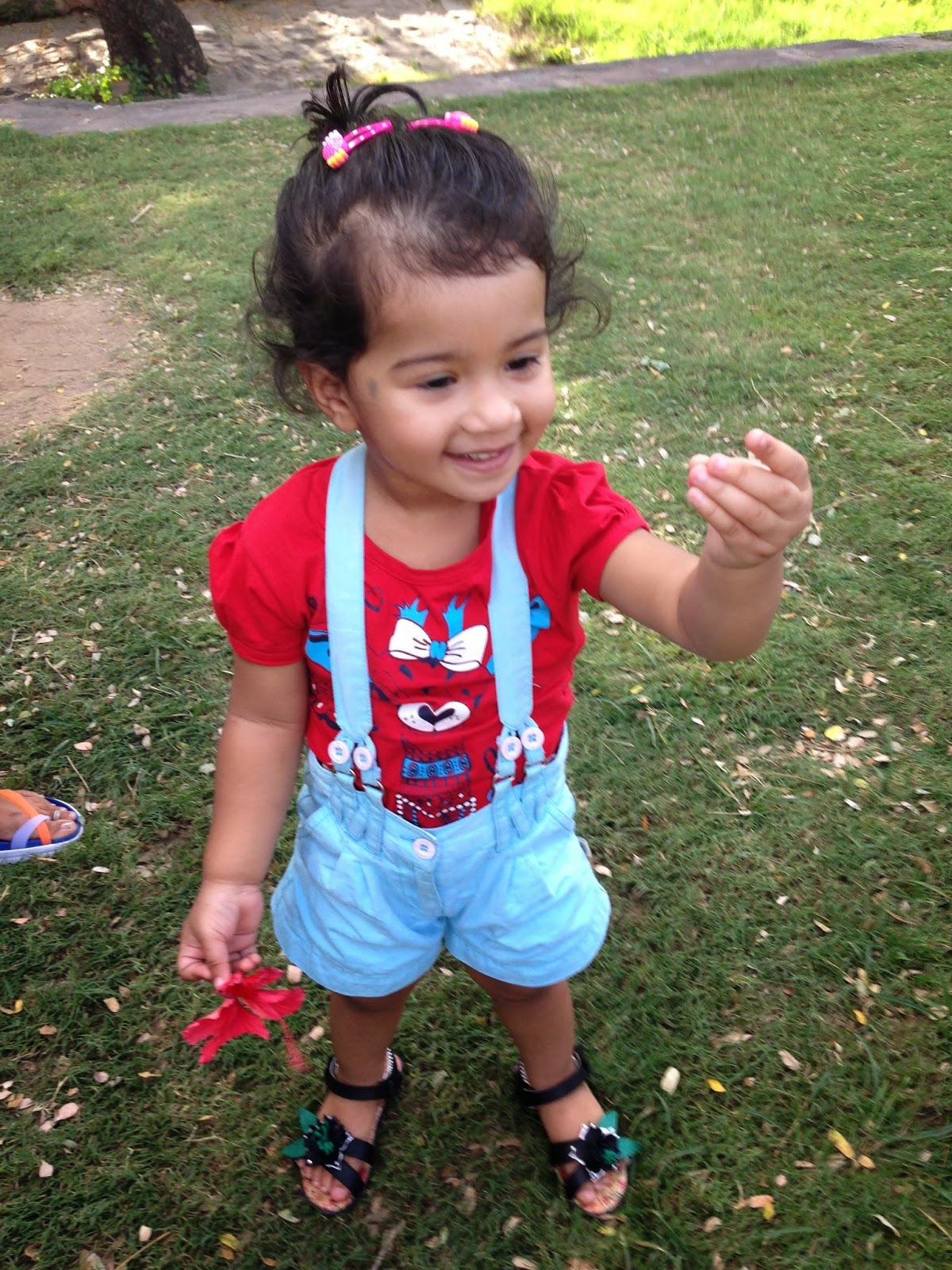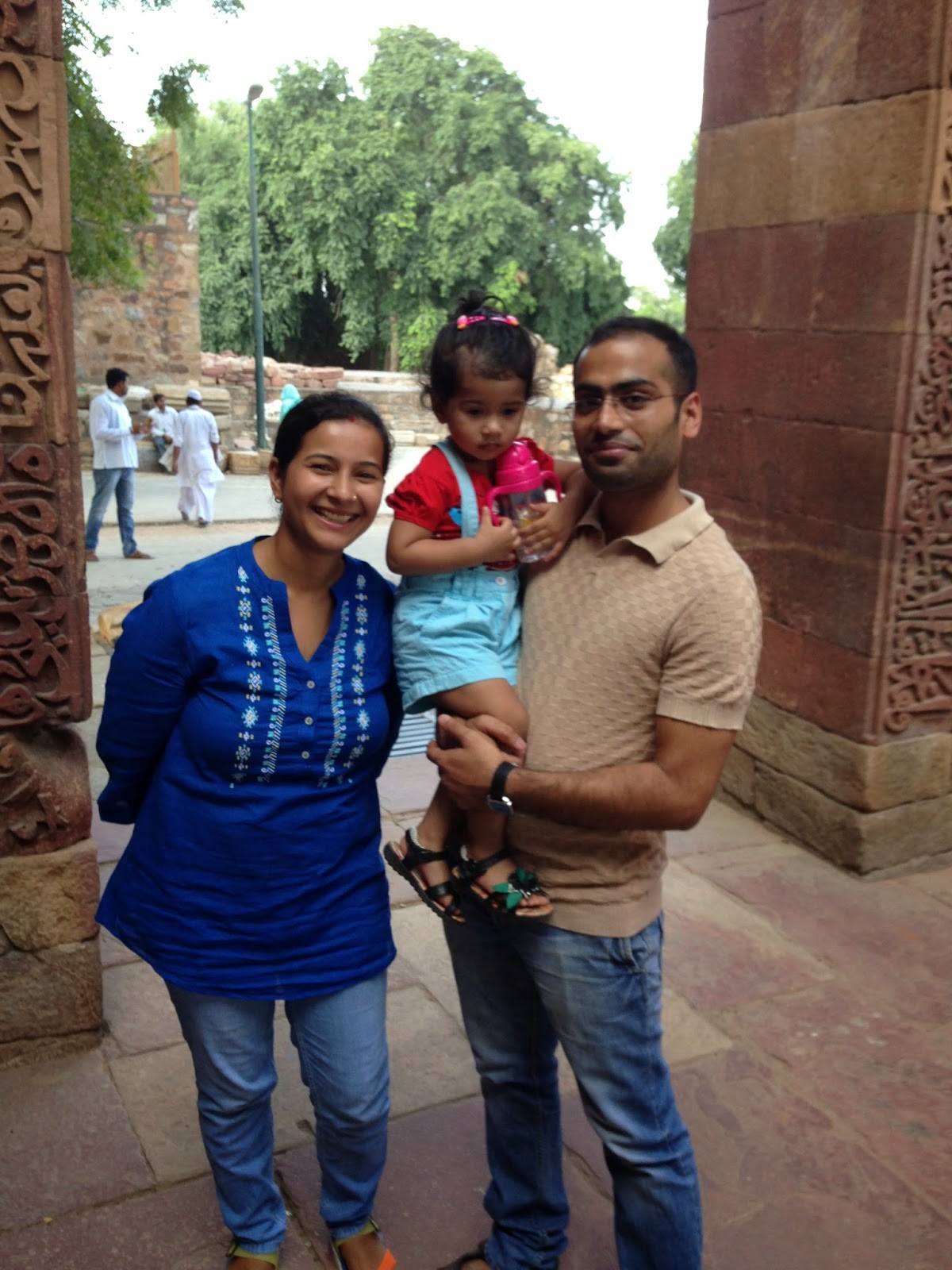This entry will cover a day trip I took to Delhi to see some sights, and meet up with work friends and some of their families, which was really great. After I took a short metro ride to the Qutab Minar metro stop, I met Rajesh and his family at the gates and saw this minaret called Qutb Minar, the tallest monument in India, standing 240 feet high, built from 1192 to 1368. This is an Islamic monument that was built on Lal Kot, the Red Citadel of the previous Hindu rulers of what is now Delhi.
There are some beautiful skies in India. I'm still trying to figure out what makes them possible. Maybe because we're closer to the equator than Minnesota, so the sun is a little higher in the sky. I don't know. The Qutb Minar tower is made of red sandstone and marble, and is covered with bands of carvings and verses from the Qur'an.
Incredible carvings. They don't make 'em like they used to.
Below is the original bell tower of the minaret.
The beauty and antiquity of Qutb Minar is so affecting. Surrounding the Qutb Minar are more ancient and medieval structures that comprise the Qutb complex. To the right, in the above picture, is the Quwwat-ul-Islam Mosque, the first mosque to be built in India. Most of the stones, columns, and other construction materials in the mosque were re-purposed from Hindu and Jain temples that were destroyed. This is the walkway that leads to the mosque. A covered pavilion, of sorts.

Front walkway.

Shot of the mosque dome and a dome over a tomb.
The gateways, arches, and domes in India are stupendous. Let's agree that the dome is the most awesomest feat in architecture. I'm talking stone domes here, not inflated teflon.
One corner beneath the dome.
Beautiful stuff.
A pavilion.
Structures like these were all over the complex. I couldn't help but imagine what the complex was like in it's day. These structures made a great place to play hide and seek. Vikas and his daughter, Bhavya, had quite the ongoing game. Below you can see Vikas's wife Preeti having a rest. I think Bhavya is with her, too.
Below is probably the oldest artifact I've seen in Delhi, the Iron Pillar of Delhi, which they now believe actually came from Madhya Pradesh, a different state. The pillar is 23 meters tall and dates to around 500 A.D. The pillar is a testament to the skill of ancient Indian metallurgists, because it still hasn't rusted. This is because it is coated with crystalline iron hydrogen phosphate. The pillar was created to memorialize a war victory of Gupta King Candragupta.
Here we're relaxing in one of the complex gardens. Harshit, my friend and co-worker, is with his daughter Anvi, in the middle. His wife Babita is to the left. Rajesh is on the right and Ranjana is seated. The moms brought snacks for us to eat. Good thinking. I was glad to have a coconut slice and some chips. Thank you, wonderful mothers!
Two red flowers.
Harshit and family.
From right to left, Sandeep, Harshit, Anvi, Vikas, and myself.
From Qutb Minar, we hopped in the three cars and drove to Adam Khan's tomb, otherwise known as Bhool Bhulaiya, or "maze", so named for its potentially disorienting octagonal shape. The tomb holds the remains of Adam Khan, a Moghul ruler from the 16th century.
This is the view from the steps in the above picture. The word "bustling" is an unjust descriptor.
The Qutb Minar minaret can be seen from the tomb, and many other parts of Delhi.
The tomb was beautiful and open to the public. Here you can see some men playing cards in the shade just outside the tomb's wall. It was a trick-based game.
Kanha and his grandmom. I'm excited to go to their place for lunch on Friday.
The last stop of the day was Ahinsa Sthal, a Jain temple. There was surprisingly little information about the temple online. Although the temple sits on busy Mehrauli Road in Delhi, it's a large and peaceful garden. First stop was an expanse of green grass to run around in. And then there were the portly rabbits.
Hey, what's that?
We climbed these steps...

...to the top...

...where we came upon this awe-inspiring carving of Lord Mahavira. It was carved from a single piece of marble. Lord Mahavira lived from 599 to 527 B.C. He is regarded as the reformer of Jainism and is known for practicing non-violence and respect for the dignity of all life. These ideas are part of the first of five ethical principles he created that centered on improving quality of life.
As you can see, quite the view. Qutb Minar is again in the distance. Harshit showed me how to pray on the mat before Lord Mahavira. Little Anvi prayed with us.
And then we relaxed and took everything in one last time.
There are some beautiful skies in India. I'm still trying to figure out what makes them possible. Maybe because we're closer to the equator than Minnesota, so the sun is a little higher in the sky. I don't know. The Qutb Minar tower is made of red sandstone and marble, and is covered with bands of carvings and verses from the Qur'an.
Incredible carvings. They don't make 'em like they used to.
Below is the original bell tower of the minaret.
The beauty and antiquity of Qutb Minar is so affecting. Surrounding the Qutb Minar are more ancient and medieval structures that comprise the Qutb complex. To the right, in the above picture, is the Quwwat-ul-Islam Mosque, the first mosque to be built in India. Most of the stones, columns, and other construction materials in the mosque were re-purposed from Hindu and Jain temples that were destroyed. This is the walkway that leads to the mosque. A covered pavilion, of sorts.

Front walkway.

Shot of the mosque dome and a dome over a tomb.
Entry to the main dome.
The gateways, arches, and domes in India are stupendous. Let's agree that the dome is the most awesomest feat in architecture. I'm talking stone domes here, not inflated teflon.
One corner beneath the dome.
Rajesh's wife Bindu, mother Ranjana, son Kanha, and Rajesh, enjoying a rest in the cool shade of the mosque.
The tomb of Imam Zamin, a Turkish saint who lived in the mosque around 1500.
This is my friend Sandeep, standing tall. He's a co-worker and cricketer on the work team.
This is a close-up of the carvings on the other side of the fallen arch in the above picture.
Beautiful stuff.
A pavilion.
Structures like these were all over the complex. I couldn't help but imagine what the complex was like in it's day. These structures made a great place to play hide and seek. Vikas and his daughter, Bhavya, had quite the ongoing game. Below you can see Vikas's wife Preeti having a rest. I think Bhavya is with her, too.
Below is probably the oldest artifact I've seen in Delhi, the Iron Pillar of Delhi, which they now believe actually came from Madhya Pradesh, a different state. The pillar is 23 meters tall and dates to around 500 A.D. The pillar is a testament to the skill of ancient Indian metallurgists, because it still hasn't rusted. This is because it is coated with crystalline iron hydrogen phosphate. The pillar was created to memorialize a war victory of Gupta King Candragupta.
Here we're relaxing in one of the complex gardens. Harshit, my friend and co-worker, is with his daughter Anvi, in the middle. His wife Babita is to the left. Rajesh is on the right and Ranjana is seated. The moms brought snacks for us to eat. Good thinking. I was glad to have a coconut slice and some chips. Thank you, wonderful mothers!
Two red flowers.
Harshit and family.
From right to left, Sandeep, Harshit, Anvi, Vikas, and myself.
From Qutb Minar, we hopped in the three cars and drove to Adam Khan's tomb, otherwise known as Bhool Bhulaiya, or "maze", so named for its potentially disorienting octagonal shape. The tomb holds the remains of Adam Khan, a Moghul ruler from the 16th century.
This is the view from the steps in the above picture. The word "bustling" is an unjust descriptor.
The Qutb Minar minaret can be seen from the tomb, and many other parts of Delhi.
The tomb was beautiful and open to the public. Here you can see some men playing cards in the shade just outside the tomb's wall. It was a trick-based game.
Kanha and his grandmom. I'm excited to go to their place for lunch on Friday.
The last stop of the day was Ahinsa Sthal, a Jain temple. There was surprisingly little information about the temple online. Although the temple sits on busy Mehrauli Road in Delhi, it's a large and peaceful garden. First stop was an expanse of green grass to run around in. And then there were the portly rabbits.
Hey, what's that?
We climbed these steps...

...to the top...

As you can see, quite the view. Qutb Minar is again in the distance. Harshit showed me how to pray on the mat before Lord Mahavira. Little Anvi prayed with us.
And then we relaxed and took everything in one last time.
Our timing was perfect. Thank you to Preeti, Bhavya, Vikas, Ranjana, Bindu, Kanha, Rajesh, Babita, Anvi, and Sandeep for making this day so memorable!







































